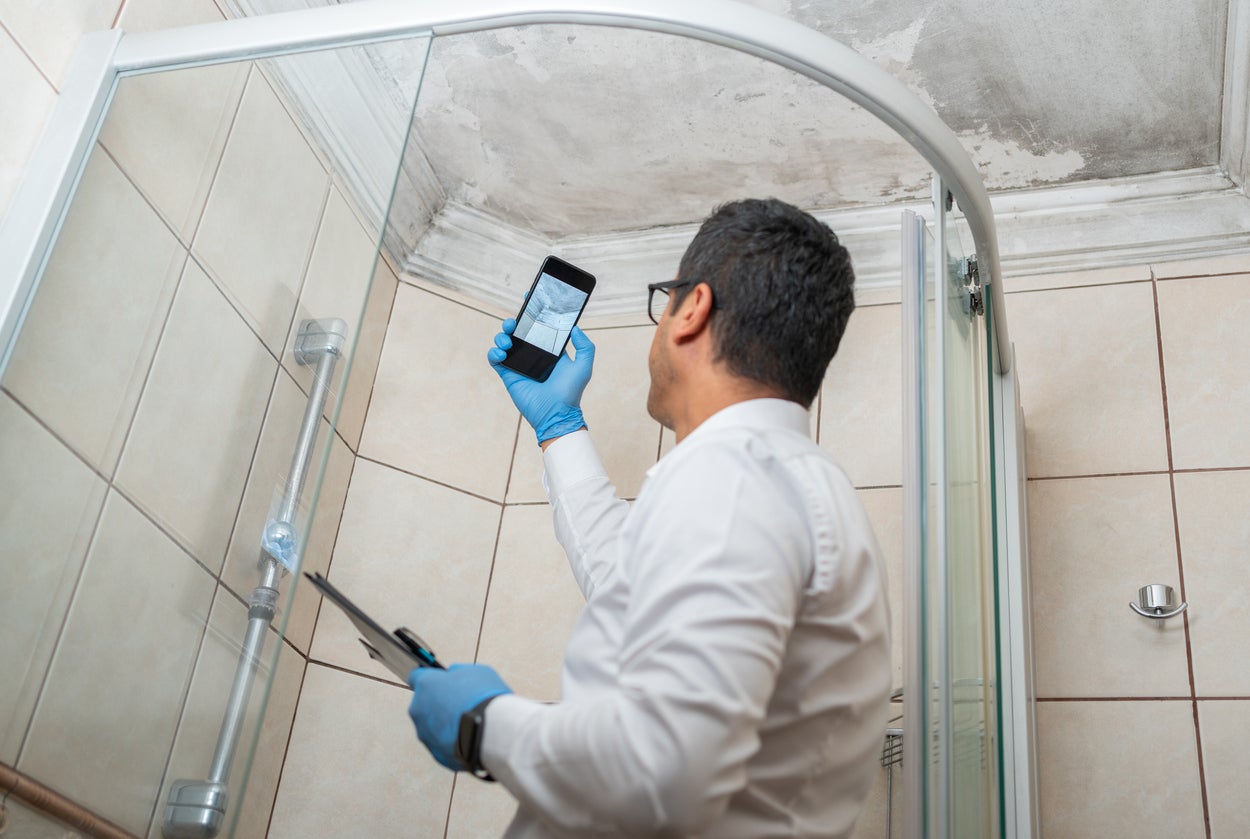Accessing Regional Post Remediation Mold Testing Near Me
Specialist Tips for Blog Post Mold And Mildew Remediation Success
In the world of mold and mildew remediation, effectively eliminating mold and mildew is only half the fight; the real obstacle lies in avoiding its reappearance. By sticking to professional tips and finest methods, individuals can guard their spaces versus mold and mildew revival and keep a healthy interior atmosphere.
Display Humidity Levels Frequently
Routine monitoring of moisture degrees is essential in guaranteeing the effectiveness of post mold and mildew remediation efforts. After completing mold and mildew removal treatments, preserving optimal moisture degrees is vital to protect against mold and mildew re-growth and make certain a healthy indoor setting. Surveillance humidity degrees allows for very early detection of any kind of spikes or fluctuations that could potentially lead to mold and mildew revival. High moisture levels above 60% create a helpful environment for mold to flourish, making normal keeping track of a proactive step to stop any future mold and mildew problems - Post remediation mold testing near me.
In addition, establishing a regular timetable for humidity checks, specifically in high-risk areas such as basements, shower rooms, and cooking areas, is an aggressive method to mold prevention. By consistently monitoring humidity levels, residential or commercial property proprietors can properly alleviate the danger of mold reoccurrence and maintain a healthy indoor setting post-remediation.
Conduct Thorough Inspections Post-Remediation
Adhering to the conclusion of mold removal procedures, it is necessary to conduct detailed examinations to validate the effectiveness of the remediation procedure. These post-remediation examinations are crucial in making sure that the mold problem has actually been effectively resolved and that there is no recurrence or staying mold development. Evaluations should be executed by qualified professionals who have knowledge in recognizing mold and mildew and examining interior air high quality.
During these examinations, different techniques such as aesthetic evaluations, air sampling, and surface area sampling may be utilized to extensively review the remediated locations. Visual analyses entail a thorough examination of the premises to examine for any type of noticeable indicators of mold development or water damages. Air sampling aids in identifying the air-borne mold spore levels, while surface area sampling can discover mold bits on surface areas.
Implement Correct Ventilation Strategies
After making sure the effectiveness of the mold and mildew removal procedure via detailed assessments, the following important step is to concentrate on implementing proper air flow strategies. Ample air flow is vital in avoiding mold and mildew reoccurrence by managing moisture levels and advertising air blood circulation.
Appropriate air flow not just aids in protecting against mold and mildew growth yet likewise contributes to the overall health and wellness and comfort of occupants. By making sure adequate ventilation throughout the residential property, you can minimize the danger of mold and mildew regrowth and produce a much healthier living setting. Normal upkeep of air flow systems, consisting of cleaning and filter replacements, is essential to maintaining effective ventilation. Consulting with cooling and heating professionals can offer additional understandings right into maximizing air flow strategies for your particular residential or commercial property requirements.

Use Mold-Resistant Products for Repair Works
To enhance the lasting effectiveness of mold removal initiatives, incorporating mold-resistant products for repair work is critical in minimizing the risk of future mold development. Mold-resistant materials are developed to stand up to wetness and prevent mold growth, making them a crucial choice for areas prone Read Full Article to dampness and humidity. When repairing areas influenced by mold, utilizing materials such as mold-resistant drywall, mold-resistant paints, and mold-resistant caulking can help protect against mold reappearance.
Mold-resistant drywall is a superb alternative to standard drywall in locations like cellars and restrooms where moisture degrees are greater. This type of drywall has a special finishing that withstands mold development also when revealed to damp conditions. Furthermore, using mold-resistant paints consisting of antimicrobial agents can further prevent mold and mildew growth on ceilings and wall surfaces.
In areas where dampness is typical, such as bathroom and mold removal home remedies kitchens, making use of mold-resistant caulking around bathtubs, home windows, and sinks can aid secure out water and avoid mold from taking hold in cracks and crevices. By investing in these mold-resistant materials during repair work post-remediation, you can substantially minimize the chance of future mold and mildew problems and maintain a healthier interior setting.
Maintain Tidiness and Address Water Issues
After mold and mildew remediation, it is vital to maintain a tidy environment to stop the regrowth of mold and mildew. Leaks, water intrusion, or high moisture degrees can create the ideal reproduction ground for mold, so it is important to deal with any water-related problems promptly.
To keep sanitation, consider utilizing HEPA filters in vacuum cleaners and air cleansers to catch mold and mildew spores and prevent their flow airborne. Making certain appropriate ventilation in locations susceptible to moisture build-up, such as kitchens and bathrooms, can help maintain moisture degrees in check. By remaining cautious about cleanliness and dealing with water issues immediately, you can efficiently stop mold and mildew reinfestation and preserve a healthy indoor atmosphere.
Final Thought

In the world of mold and mildew removal, successfully eradicating mold and mildew is only half the battle; the true difficulty Recommended Site exists in stopping its reappearance. After completing mold removal treatments, keeping optimal humidity levels is essential to stop mold and mildew re-growth and make sure a healthy and balanced interior setting. High humidity levels above 60% produce a helpful setting for mold to prosper, making normal keeping an eye on a proactive step to protect against any future mold and mildew problems.
To boost the lasting performance of mold and mildew removal initiatives, including mold-resistant products for fixings is crucial in reducing the danger of future mold growth. After mold removal, it is vital to keep a clean environment to protect against the regrowth of mold.